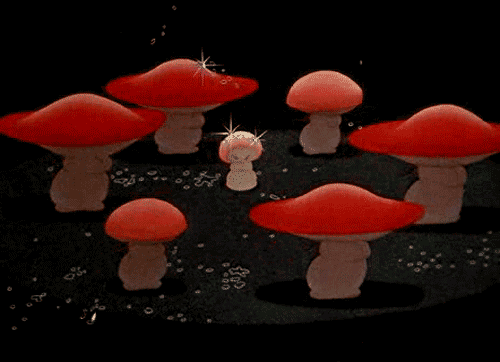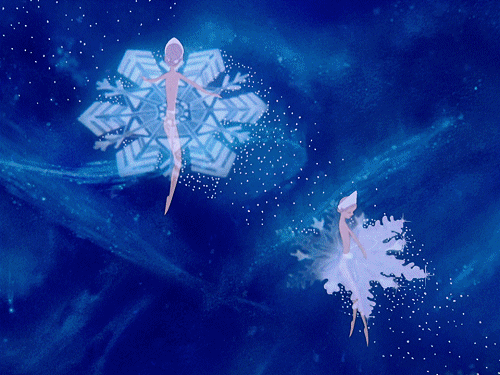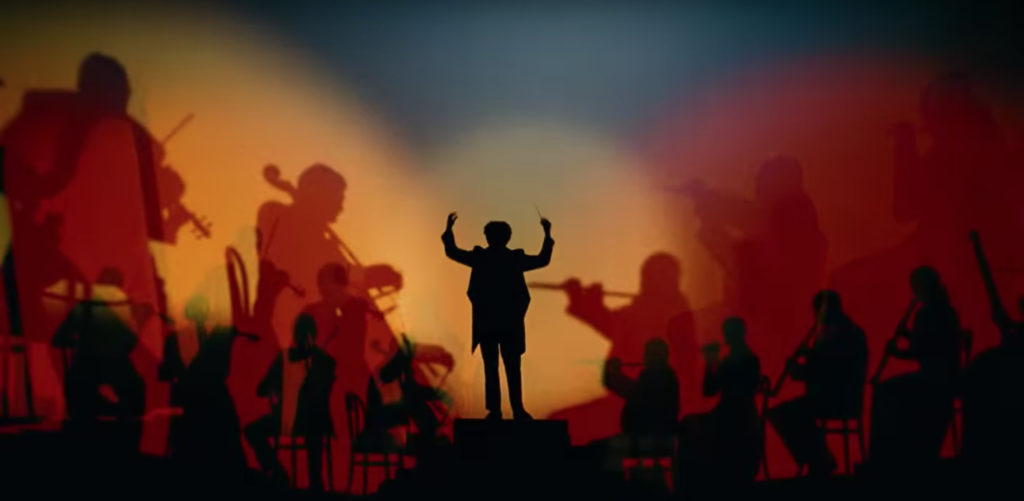What do you visualize in your head when you hear Tchaikovsky’s beautiful music from The Nutcracker? While the answer may be any of the magical settings and characters from the timeless ballet production, Disney fans probably don’t see nutcrackers or Christmas imagery at all. Fairies that give and take life from nature, fish with long tails at the bottom of a lake, hopping mushrooms, and swirling flowers; these are the connections Tchaikovsky never intended that we make thanks to Walt Disney’s Fantasia.
How did selections of music from Act II of the ballet become part of “The Concert Feature?” Walt Disney and Leopold Stokowski selected it due to its growing popularity in an effort to give audiences something familiar in what was mostly a collection of classical pieces over 100 years old. For a little bit of context, Tchaikovsky’s music from the ballet was only 48 years old when Fantasia was released and just a few years later, George Balanchine revived the failed ballet production in New York City, which became an annual tradition that lives on to this day. Not for nothing, Balanchine was a choreographer in Hollywood in the late 1930’s and visited Disney’s studio during production on Fantasia.
The arrangement known as “The Nutcracker Suite” is made up of seven segments from the ballet with an overture. Tchaikovsky put it together in 1892 to help promote the upcoming ballet, but over time it has become a mainstay of regional symphony performances of Tchaikovsky’s work. Disney chose to omit the overture as well as the “March,” which is the piece of music most commonly associated with The Nutcracker.
The visual concept for “The Nutcracker Suite” segment was to represent the four seasons of nature. However, dancing is still a part of the piece, with leaves, flowers, seeds, fairies, fish, and mushrooms all having a choreographed flow to their movement. While it ditches the imagery of E.T.A. Hoffman’s short story, it still retains the ballet esthetic that audiences expect to see with the music.
On a technical level, this segment of Fantasia features animation so challenging that artists still marvel at the discipline of the masterminds who achieved these shots without the aid of computers. Transparent paints were revolutionary for this sequence, with the shot of the seeds floating to the ground requiring air brushing on every cel. Herman Schultheis developed many effects for the film, including a circular multi-plane camera for the shot where the fairies add dew drops to a spider web and mechanical gears filmed on a track for the snowflakes that float through the air catching light, with fairies wearing the flakes like a tutu.
When Walt Disney Animation Studios revisited Fantasia in 1999 in Fantasia 2000, one of the new sequences included imagery more synonymous with The Nutcracker. Based on Hans Christian Anderson’s The Steadfast Tin Soldier, the sequence is set to “Piano Concerto No. 2 in F Major” by Dmitri Shostakovich. It features a toy soldier, a ballerina, and rats. The Fantasia 2000 sequence was inspired by storyboards created in 1938 by Disney Story Artist Bianca Majolie, which coincides with production on the original Fantasia.
On November 2nd, Disney will add new visions that dance in your head when you hear the great Tchaikovsky music, thanks to The Nutcracker and the Four Realms. Without Fantasia keeping Tchaikovsky’s music from the ballet in the public consciousness, the ballet’s American debut in 1954 might not have been the success that it was. Fans of Walt Disney’s Fantasia are likely to catch at least one nod to the film, which can be seen in the trailer. During the ballet sequence with Misty Copeland, a conductor and orchestra are silhouetted against a spotlit backdrop reminiscent of the live action segments of the animated classic.




